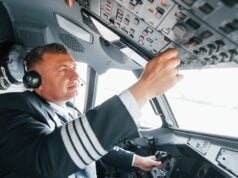
What do I get for my union dues?
Welcome back. Last month, we left off with the process for airline pilot contract negotiations (collective bargaining) being regulated by the Railway Labor Act (RLA). Back in 1936 it was simply easier for Congress to add pilots to existing laws rather than draft new legislation. As transportation entities, pilots and the airlines were included to the legislation covering railway workers and the railways. This month, we take a quick look at some of the services unions provide to their members and the financial commitment required by members in order to receive them.
Although no single union represents the entire airline industry, it is heavily unionized including the workers on the ramp, the gate, mechanics, flight attendants, dispatchers, and pilots.
In general, labor unions:
- Provide personal and professional assistance to its members
- Promote and protect the profession
- Raise awareness of professional and industry issues
The various means by which this is accomplished are determined though specific organizational structure that are typically provided by a group or committee of volunteers from within the represented body itself. For pilot unions, such as the Air Line Pilots Association (ALPA), a massive committee structure made up of pilot volunteers donate their time to assist fellow pilots with various issues affecting their personal and professional lives. This committee structure includes issues and policy related to air safety, grievance and contract enforcement, negotiations, hotels, crew meals, aeromedical, communications, testing and training, professional standards, along with jumpseat and security.
Unions also provide broad industry engagement, legislative engagement, community outreach, professional development, job protection, and other member support, from medical issues to natural disaster relief, furlough assistance, and veterans affairs. Moreover, unions provide a social network as well as other member benefits such as insurance programs, credit unions, banking and loan options, education tuition assistance, consumer discounts on products and services, etc.
Yet this kind of support does not come free. Although volunteers may altruistically engage in this work, the resources used to support their activities and thereby support you, still costs money. This is where union dues come in.
Dues are the monies paid to the union in order to support these services. The typical arrangement is a small monthly percentage from the pilot’s gross pay which is withheld by the company’s payroll department (referred to as “dues checkoff”) and sent directly into the union coffers. Although the monthly amount or dues percentages vary by the representing union, generally for pilots, it is less than two percent of one’s monthly pay. For those who think that any amount withheld from their pay is too much for services of which you may or may not ever take direct advantage, consider this: Most likely, you have auto, home, medical, and life insurance in the event something goes wrong. Well, the union is your career’s insurance policy and your union dues are your premiums. If something goes wrong, you have a massive amount of resources available to help you through it.
Lastly – and just being honest here – airlines do not pay pilots because they think we are awesome. They pay us because we are a commodity they need. We are labor] and we receive the pay and benefits we do because the union have negotiated for them on our collective behalf; not because management necessarily believes this is what we are worth. Thus, this is an investment worth making. This is what your dues provide you as a member.
In April’s Grey Matter column, part three in this series, we will take a look at union structure and some of the unions that serve the U.S. airline industry.














































































